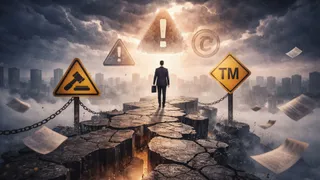
Copyright and NFTs: new wine in old bottles?
Non-fungible tokens—also known as NFTs or “nyfties”—are digital assets on the secure blockchain. They are mainly used to sell exclusive, digital items online and since a digital artwork tokenised as a NFT sold for $69 million at Christies in March 2021, it has expanded into various other industries, ranging from sport, fashion, music, films, entertainment to many more.
Already registered?
Login to your account
If you don't have a login or your access has expired, you will need to purchase a subscription to gain access to this article, including all our online content.
For more information on individual annual subscriptions for full paid access and corporate subscription options please contact us.
To request a FREE 2-week trial subscription, please signup.
NOTE - this can take up to 48hrs to be approved.
For multi-user price options, or to check if your company has an existing subscription that we can add you to for FREE, please email Adrian Tapping at atapping@newtonmedia.co.uk

